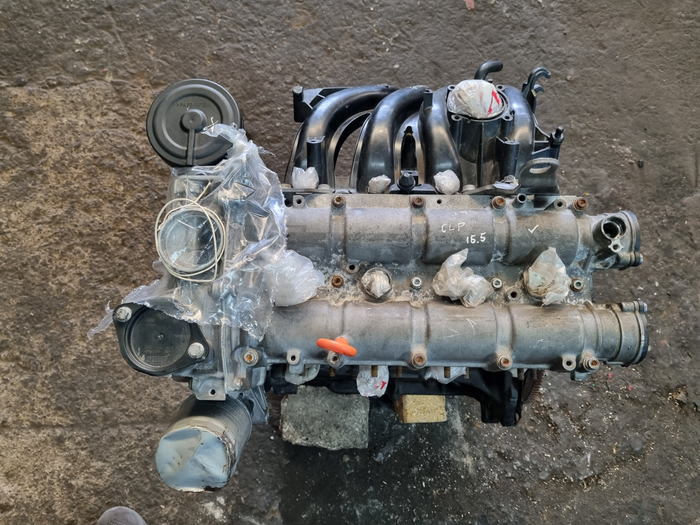Discover the best clp engine for your specific needs.
Discover the best clp engine for your specific needs.
Blog Article
How a Clp Engine Can Boost Effectiveness in Various Industries
The arrival of CLP engines notes a considerable change in functional effectiveness across various sectors, driven by their capacity to optimize fuel intake and minimize downtime. Industries such as manufacturing and logistics stand to gain considerably from their robust layout and consistent power result, which promise to streamline procedures and improve efficiency. As companies progressively prioritize sustainability along with effectiveness, the function of CLP engines ends up being much more vital. What remains to be seen is just how these improvements will form the future landscape of industrial procedures and their influence on broader financial fads (clp engine).
Overview of CLP Engines
CLP engines, or Continuous Liquid Propellant engines, represent a substantial innovation in propulsion technology, especially for room applications. These engines use a constant feed system that enables for the continual expulsion of propellant, resulting in improved performance and performance contrasted to standard strong or hybrid propulsion systems. By maintaining a consistent flow of liquid propellant, CLP engines can achieve extra specific thrust control, which is critical for navigating spacecraft in numerous goal situations.
The design of CLP engines integrates advanced products and ingenious fuel monitoring systems. clp engine. This causes decreased weight and raised dependability, crucial aspects for long-duration room objectives. The continuous operation lessens the risk of combustion instability, an usual difficulty in traditional rocket engines.

Advantages in Manufacturing
The production of Continuous Liquid Propellant (CLP) engines presents numerous remarkable advantages that improve both efficiency and cost-effectiveness. One of the main benefits is the streamlined manufacturing process, which reduces the intricacy connected with standard propulsion systems. By making use of liquid propellant, manufacturers can achieve higher precision in engine performance, causing optimized energy result and minimized waste.
Furthermore, CLP engines promote a higher degree of modularity, enabling for much easier assimilation right into numerous manufacturing lines. This versatility can considerably decrease preparations and enhance overall operational versatility. Making use of CLP technology likewise has a tendency to minimize the requirement for considerable maintenance because of less moving parts, which translates into lowered downtime and operational prices.

Applications in Logistics
Leveraging Continuous Liquid Propellant (CLP) engines in logistics uses considerable benefits in operational efficiency and dependability. These engines provide a robust remedy for different transport needs, allowing the smooth activity of items across substantial ranges. The integral design of CLP engines enables regular power output, which translates right into smoother and extra foreseeable transportation routines.
One of the essential applications of CLP engines in logistics is in durable products transportation, where they can drive both ground and airborne vehicles. Their capability to maintain high efficiency under varying lots conditions guarantees that distribution timelines are fulfilled, consequently improving consumer fulfillment. In addition, CLP engines can be integrated right into automated logistics systems, assisting in real-time tracking and maximizing route planning.
Moreover, the durability great site of CLP engines minimizes maintenance downtime, allowing logistics firms to maximize their operational capacities. This is especially advantageous in warehousing operations, where effectiveness in dealing with and delivering goods is critical. As logistics remains to evolve, the assimilation of CLP engines represents a forward-thinking technique that not just boosts performance however also sustains the sector's growing needs for integrity and speed.
Influence on Power Effectiveness
How do Constant Fluid Propellant (CLP) engines improve energy effectiveness in transport? CLP engines make use of a constant circulation of fluid gas, maximizing combustion processes and preserving a steady drive result. This layout decreases energy losses connected with conventional combustion engines, where gas shipment can vary and lead to ineffectiveness.
The continuous operation of CLP engines permits an extra effective thermal cycle, resulting in higher specific impulse contrasted to standard engines. clp engine. This translates to minimized gas usage for the very same amount of job done, significantly lowering functional prices across various transport sectors, consisting of aviation and maritime sectors
Additionally, the capability of CLP engines to preserve optimal efficiency under varying lots problems reduces the demand for regular acceleration and slowdown, better improving fuel effectiveness. Boosted energy performance not only adds to cost financial savings yet likewise leads to decrease greenhouse gas discharges, lining up with global sustainability goals.
Future Trends and Innovations
Emerging improvements in Continuous Fluid Propellant (CLP) engine modern technology promise to change the landscape of transportation efficiency and sustainability. As sectors pivot towards greener options, CLP engines stand at the leading edge, incorporating ingenious materials and layout methodologies that improve performance while minimizing ecological influence.
Among the most encouraging trends is the adoption of hybrid systems that combine CLP engines with sustainable power sources. This harmony can optimize gas usage and reduce exhausts, aligning with global sustainability objectives. Advancements in computational liquid characteristics (CFD) are facilitating the design of even more aerodynamically efficient engines, leading to reduced drag and boosted gas performance.
Furthermore, the growth of clever tracking systems is established to improve operational effectiveness. These systems take advantage of data analytics and IoT technology to enhance engine efficiency in real-time, making certain that the engines run within their most reliable specifications.
As study continues to discover alternate propellant formulas-- such as biofuels and artificial fuels-- the future of CLP engines looks appealing. By using her latest blog these technologies, sectors can not only enhance their effectiveness yet likewise add dramatically to a cleaner, much more sustainable future in transport.
Verdict
Finally, CLP engines represent a significant advancement in effectiveness throughout numerous sectors. Their capability to enhance gas intake and minimize functional costs, incorporated with a constant feed system, improves power outcome and functional integrity. The assimilation of innovative products and fewer relocating parts lessens upkeep demands, while positioning with sustainability goals placements CLP engines as a critical modern technology for the future. Continued technology in this field guarantees additional enhancements in performance and environmental performance.
Report this page